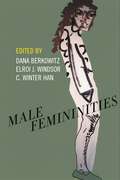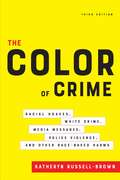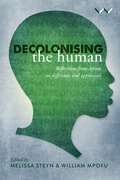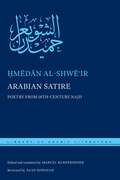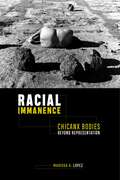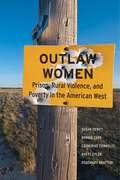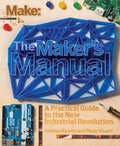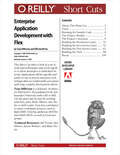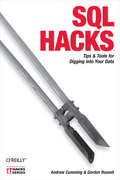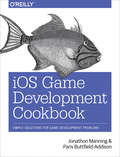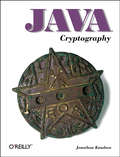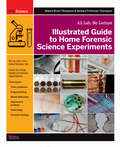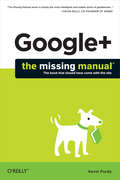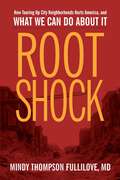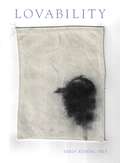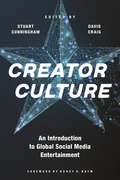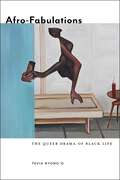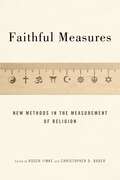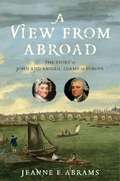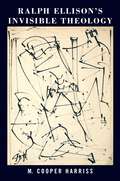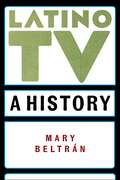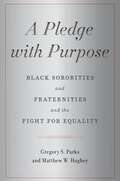- Table View
- List View
Male Femininities
by C. Winter Han Dana Berkowitz Elroi J. WindsorInnovative essays that explore how men perform femininity and what femininity looks like without womenWhat counts as “male femininity”? Is it simply men behaving in effeminate ways or is it the absence of masculinity? Male Femininities presents a nuanced, critical collection of essays that highlight the extent to which male femininities are neither an imitation of femaleness nor an emptying of masculinity. These innovative essays focus on both gay and straight men, and transmasculine and genderqueer people in their construction and performance of femininity, thereby revealing the possibilities that open up when we critically examine femininity without women. Male Femininities asks, What does femininity look like for men?The contributors—highly regarded scholars and rising stars—cover a range of topics, including drag queens, cosmetic enhancements, trans fertility, and gender-non-conforming childhoods. Male Femininities illuminates what happens when we decouple femininity from female bodies and how even the smallest cracks and fissures in the normative order can disrupt, challenge, and in some cases reaffirm our existing sex-gender regime. This volume pluralizes the concept of male femininities and leads readers through an exploration of how gender, sex, and sexuality are manifested in the United States today.
The Color of Crime, Third Edition: Racial Hoaxes, White Crime, Media Messages, Police Violence, and Other Race-Based Harms
by Katheryn Russell-BrownHow we can understand race, crime, and punishment in the age of Black Lives MatterWhen The Color of Crime was first published in 1998, it was heralded as a path-breaking book on race and crime. Now, in its third edition, Katheryn Russell-Brown’s book is more relevant than ever, as police killings of unarmed Black civilians—such as George Floyd, Breonna Taylor, and Daniel Prude—continue to make headlines around the world. She continues to ask, why do Black and white Americans perceive police actions so differently? Is white fear of Black crime justified?With three new chapters, over forty new racial hoax cases, and other timely updates, this edition offers an even more expansive view of crime and punishment in the twenty-first century. Russell-Brown gives us much-needed insight into some of the most recent racial hoaxes, such as the one perpetrated by Amy Cooper. Should perpetrators of racial hoaxes be charged with a felony? Further, Russell-Brown makes a compelling case for race and crime literacy and the need to address and name White crime. Russell-Brown powerfully concludes the book with a parable that invites readers to imagine what would happen if Blacks decided to abandon the United States. Russell-Brown explores the tacit and subtle ways that crime is systematically linked to people of color. The Color of Crime is a lucid and forceful volume that calls for continued vigilance on the part of scholars, policymakers, journalists, and others in the age of Black Lives Matter.
Decolonising the Human: Reflections from Africa on difference and oppression
by Melissa Steyn, William MpofuDecolonising the Human examines the ongoing project of constituting ‘the human’ in light of the durability of coloniality and the persistence of multiple oppressionsThe ‘human’ emerges as a deeply political category, historically constructed as a scarce existential resource. Once weaponised, it allows for the social, political and economic elevation of those who are centred within its magic circle, and the degradation, marginalisation and immiseration of those excluded as the different and inferior Other, the less than human. Speaking from Africa, a key site where the category of the human has been used throughout European modernity to control, exclude and deny equality of being, the contributors use decoloniality as a potent theoretical and philosophical tool, gesturing towards a liberated, pluriversal world where human difference will be recognised as a gift, not used to police the boundaries of the human. Here is a transdisciplinary critical exploration of a wide range of subjects, including history, politics, philosophy, sociology, anthropology and decolonial studies.
Arabian Satire: Poetry from 18th-Century Najd (Library of Arabic Literature #49)
by Ḥmēdān al-ShwēʿirThis lively volume collects poems by Hmedan al-Shwe'ir, who lived in Najd in the Arabian Peninsula shortly before the hegemony of the Wahhabi movement in the early eighteenth century.A master of satire known for his ribald humor, self-deprecation, and invective verse (hija'), Hmedan was acerbic in his criticisms of society and its morals, voiced in in a poetic idiom that is widely referred to as “Nabati,” here a mix of Najdi vernacular and archaic vocabulary and images dating back to the origins of Arabic poetry. In Arabian Satire, Hmedan is mostly concerned with worldly matters, and addresses these in different guises: as the patriarch at the helm of the family boat and its unruly crew; as a picaresque anti-hero who revels in taking potshots at the established order, its hypocrisy, and its moral failings; as a peasant who labors over his palm trees, often to no avail and with no guarantee of success; and as a poet recording in verse how he thinks things ought to be.The poems in Arabian Satire reveal a plucky, headstrong, yet intensely socially committed figure—representative of the traditional Najdi ethos—who infuses his verse with proverbs, maxims, and words of wisdom expressed plainly and conversationally. Hmedan is accordingly quoted by historians of the Gulf region and in anthologies of popular sayings. This is the first full translation of this remarkable poet. A bilingual Arabic-English edition.
Racial Immanence: Chicanx Bodies beyond Representation
by Marissa K. LópezWinner, 2021 NACCS Book Award, given by the National Association for Chicano and Chicana StudiesExplores the how, why, and what of contemporary Chicanx culture, including punk rock, literary fiction, photography, mass graves, and digital and experimental installation artRacial Immanence attempts to unravel a Gordian knot at the center of the study of race and discourse: it seeks to loosen the constraints that the politics of racial representation put on interpretive methods and on our understanding of race itself. Marissa K. López argues that reading Chicanx literary and cultural texts primarily for the ways they represent Chicanxness only reinscribes the very racial logic that such texts ostensibly set out to undo.Racial Immanence proposes to read differently; instead of focusing on representation, it asks what Chicanx texts do, what they produce in the world, and specifically how they produce access to the ineffable but material experience of race. Intrigued by the attention to disease, disability, abjection, and sense experience that she sees increasing in Chicanx visual, literary, and performing arts in the late-twentieth century, López explores how and why artists use the body in contemporary Chicanx cultural production. Racial Immanence takes up works by writers like Dagoberto Gilb, Cecile Pineda, and Gil Cuadros, the photographers Ken Gonzales Day and Stefan Ruiz, and the band Piñata Protest to argue that the body offers a unique site for pushing back against identity politics. In so doing, the book challenges theoretical conversations around affect and the post-human and asks what it means to truly consider people of color as writersand artists. Moving beyond abjection, López models Chicanx cultural production as a way of fostering networks of connection that deepen our attachments to the material world.
Outlaw Women: Prison, Rural Violence, and Poverty in the New American West
by Susan Dewey Bonnie Zare Catherine Connolly Rhett Epler Rosemary BrattonA journey into the experiences of incarcerated women in rural areas, revealing how location can reinforce gendered violenceIncarceration is all too often depicted as an urban problem, a male problem, a problem that disproportionately affects people of color. This book, however, takes readers to the heart of the struggles of the outlaw women of the rural West, considering how poverty and gendered violence overlap to keep women literally and figuratively imprisoned. Outlaw Women examines the forces that shape women’s experiences of incarceration and release from prison in the remote, predominantly white communities that many Americans still think of as “the Western frontier.” Drawing on dozens of interviews with women in the state of Wyoming who were incarcerated or on parole, the authors provide an in-depth examination of women’s perceptions of their lives before, during, and after imprisonment. Considering cultural mores specific to the rural West, the authors identify the forces that consistently trap women in cycles of crime and violence in these regions: felony-related discrimination, the geographic isolation that traps women in abusive relationships, and cultural stigmas surrounding addiction, poverty, and precarious interpersonal relationships. Following incarceration, women in these areas face additional, region-specific obstacles as they attempt to reintegrate into society, including limited social services, significant gender wage gaps, and even severe weather conditions that restrict travel. The book ultimately concludes with new, evidence-based recommendations for addressing the challenges these women face.
The Maker's Manual: A Practical Guide to the New Industrial Revolution
by Patrick Di Justo Paolo Aliverti Andrea MaiettaThe Maker's Manual is a practical and comprehensive guide to becoming a hero of the new industrial revolution. It features dozens of color images, techniques to transform your ideas into physical projects, and must-have skills like electronics prototyping, 3d printing, and programming. This book's clear, precise explanations will help you unleash your creativity, make successful projects, and work toward a sustainable maker business. Written by the founders of Frankenstein Garage, which has organized courses since 2011 to help makers to realize their creations, The Maker's Manual answers your questions about the Maker Movement that is revolutionizing the way we design and produce things.
Agile Enterprise Application Development with Flex
by The EffectiveUI Team Tony HillersonThis Short Cut takes a look at a set of tools and technologies that work together to allow developers to build Rich Internet Applications (RIAs) quickly and easily on top of proven enterprise technologies that are traditionally associated with long, complex development efforts.
Using SQLite: Small. Fast. Reliable. Choose Any Three. (O'reilly Ser.)
by Jay A. KreibichApplication developers, take note: databases aren't just for the IS group any more. You can build database-backed applications for the desktop, Web, embedded systems, or operating systems without linking to heavy-duty client-server databases such as Oracle and MySQL. This book shows you how to use SQLite, a small and lightweight relational database engine that you can build directly into your application.With SQLite, you'll discover how to develop a database-backed application that remains manageable in size and complexity. This book guides you every step of the way. You'll get a crash course in data modeling, become familiar with SQLite's dialect of the SQL database language, and much more.Learn how to maintain localized storage in a single file that requires no configurationBuild your own SQLite library or use a precompiled distribution in your applicationGet a primer on SQL, and learn how to use several language functions and extensionsWork with SQLite using a scripting language or a C-based language such as C# or Objective-CUnderstand the basics of database design, and learn how to transfer what you already know to SQLiteTake advantage of virtual tables and modules"Complex SQL concepts explained clearly."--D. Richard Hipp, creator of SQLite
SQL Hacks: Tips & Tools for Digging Into Your Data
by Andrew Cumming Gordon RussellWhether you're running Access, MySQL, SQL Server, Oracle, or PostgreSQL, this book will help you push the limits of traditional SQL to squeeze data effectively from your database. The book offers 100 hacks -- unique tips and tools -- that bring you the knowledge of experts who apply what they know in the real world to help you take full advantage of the expressive power of SQL. You'll find practical techniques to address complex data manipulation problems. Learn how to:Wrangle data in the most efficient way possibleAggregate and organize your data for meaningful and accurate reportingMake the most of subqueries, joins, and unionsStay on top of the performance of your queries and the server that runs themAvoid common SQL security pitfalls, including the dreaded SQL injection attackLet SQL Hacks serve as your toolbox for digging up and manipulating data. If you love to tinker and optimize, SQL is the perfect technology and SQL Hacks is the must-have book for you.
iOS Game Development Cookbook
by Paris Buttfield-Addison Jonathon ManningWant to build games with iOS technologies? This cookbook provides detailed recipes for a wide range of common iOS game-development issues, ranging from 2D and 3D math to Game Center integration, and OpenGL to performance. If you’re familiar with iOS and Objective-C, this is the problem-solving guide you want.Rather than focus on specific game engines for iOS, such as Cocos2D or the Corona SDK, the recipes in this cookbook strictly deal with baked-in iOS technologies. You’ll learn solutions for everything from tile-matching games to racing, with working code that you can use right away.Lay out the structure of your gameBuild and customize menus with UIKitDetect and respond to user inputUse advanced techniques to play sound effects and musicWork with data, using iOS devices and the cloudCreate 2D graphics with SpriteKitAdd physics simulation to your gameLearn beginning to advanced 3D graphicsCreate challenges with artificial intelligenceUse networking to add multiplayer capabilitiesWork with game controllers and multiple screens
Masterminds of Programming: Conversations with the Creators of Major Programming Languages (Theory in Practice (O'Reilly))
by Chromatic Federico BiancuzziMasterminds of Programming features exclusive interviews with the creators of several historic and highly influential programming languages. In this unique collection, you'll learn about the processes that led to specific design decisions, including the goals they had in mind, the trade-offs they had to make, and how their experiences have left an impact on programming today. Masterminds of Programming includes individual interviews with:Adin D. Falkoff: APLThomas E. Kurtz: BASICCharles H. Moore: FORTHRobin Milner: MLDonald D. Chamberlin: SQLAlfred Aho, Peter Weinberger, and Brian Kernighan: AWKCharles Geschke and John Warnock: PostScriptBjarne Stroustrup: C++Bertrand Meyer: EiffelBrad Cox and Tom Love: Objective-CLarry Wall: PerlSimon Peyton Jones, Paul Hudak, Philip Wadler, and John Hughes: HaskellGuido van Rossum: PythonLuiz Henrique de Figueiredo and Roberto Ierusalimschy: LuaJames Gosling: JavaGrady Booch, Ivar Jacobson, and James Rumbaugh: UMLAnders Hejlsberg: Delphi inventor and lead developer of C#If you're interested in the people whose vision and hard work helped shape the computer industry, you'll find Masterminds of Programming fascinating.
Java Cryptography
by Jonathan KnudsenCryptography, the science of secret writing, is the biggest, baddest security tool in the application programmer's arsenal. Cryptography provides three services that are crucial in secure programming. These include a cryptographic cipher that protects the secrecy of your data; cryptographic certificates, which prove identity (authentication); and digital signatures, which ensure your data has not been damaged or tampered with.This book covers cryptographic programming in Java. Java 1.1 and Java 1.2 provide extensive support for cryptography with an elegant architecture, the Java Cryptography Architecture (JCA). Another set of classes, the Java Cryptography Extension (JCE), provides additional cryptographic functionality. This book covers the JCA and the JCE from top to bottom, describing the use of the cryptographic classes as well as their innards.The book is designed for moderately experienced Java programmers who want to learn how to build cryptography into their applications. No prior knowledge of cryptography is assumed. The book is peppered with useful examples, ranging from simple demonstrations in the first chapter to full-blown applications in later chapters.Topics include:The Java Cryptography Architecture (JCA)The Java Cryptography Extension (JCE)Cryptographic providersThe Sun key management toolsMessage digests, digital signatures, and certificates (X509v3)Block and stream ciphersImplementations of the ElGamal signature and cipher algorithmsA network talk application that encrypts all data sent over the networkAn email application that encrypts its messagesCovers JDK 1.2 and JCE 1.2.
MySQL Troubleshooting: What To Do When Queries Don't Work
by Sveta SmirnovaStuck with bugs, performance problems, crashes, data corruption, and puzzling output? If you’re a database programmer or DBA, they’re part of your life. The trick is knowing how to quickly recover from them. This unique, example-packed book shows you how to handle an array of vexing problems when working with MySQL.Written by a principal technical support engineer at Oracle, MySQL Troubleshooting provides the background, tools, and expert steps for solving problems from simple to complex—whether data you thought you inserted doesn’t turn up in a query, or the entire database is corrupt because of a server failure. With this book in hand, you’ll work with more confidence.Understand the source of a problem, even when the solution is simpleHandle problems that occur when applications run in multiple threadsDebug and fix problems caused by configuration optionsDiscover how operating system tuning can affect your serverUse troubleshooting techniques specific to replication issuesGet a reference to additional troubleshooting techniques and tools, including third-party solutionsLearn best practices for safe and effective troubleshooting—and for preventing problems
Illustrated Guide to Home Forensic Science Experiments: All Lab, No Lecture
by Robert Bruce Thompson Barbara Fritchman ThompsonHave you ever wondered whether the forensic science you’ve seen on TV is anything like the real thing? There’s no better way to find out than to roll up your sleeves and do it yourself. This full-color book offers advice for setting up an inexpensive home lab, and includes more than 50 hands-on lab sessions that deal with forensic science experiments in biology, chemistry, and physics. You’ll learn the practical skills and fundamental knowledge needed to pursue forensics as a lifelong hobby—or even a career.The forensic science procedures in this book are not merely educational, they’re the real deal. Each chapter includes one or more lab sessions devoted to a particular topic. You’ll find a complete list of equipment and chemicals you need for each session.Analyze soil, hair, and fibersMatch glass and plastic specimensDevelop latent fingerprints and reveal blood tracesConduct drug and toxicology testsAnalyze gunshot and explosives residuesDetect forgeries and fakesAnalyze impressions, such as tool marks and footprintsMatch pollen and diatom samplesExtract, isolate, and visualize DNA samplesThrough their company, The Home Scientist, LLC (thehomescientist.com/forensics), the authors also offer inexpensive custom kits that provide specialized equipment and supplies you’ll need to complete the experiments. Add a microscope and some common household items and you’re good to go.
Google+: The Missing Manual (Oreilly And Associate Ser.)
by Kevin PurdyIf you want to gain more control over your social networking activities with Google+, this jargon-free guide helps you quickly master the ins and outs of the site. Learn how to organize your contacts, hold video chats with as many as ten people, and determine exactly who may learn what about you. With this book, you’ll navigate Google+ with ease.The important stuff you need to knowMassage your profile. Control what the public, specific groups, or certain individuals can see about you.Move in the right circles. Assign folks to different groups and share the right stuff with the right people.Jump into streams. Get all the updates, pictures, and links from people you know.Host hangouts. Organize and attend group video chats.View and share photos. Make them available to whomever you like—whether or not they’re Google+ members.Get notifications. Monitor what others do (and share about you) on Google+.Go mobile. Use Google+ on your Android, iPhone, or mobile web browser.
Root Shock: How Tearing Up City Neighborhoods Hurts America, And What We Can Do About It
by Mindy Thompson FulliloveRoot Shock examines 3 different U.S. cities to unmask the crippling results of decades-old disinvestment in communities of color and the urban renewal practices that ultimately destroyed these neighborhoods for the advantage of developers and the elite. Like a sequel to the prescient warnings of urbanist Jane Jacobs, Dr. Mindy Thompson Fullilove reveals the disturbing effects of decades of insensitive urban renewal projects on communities of color. For those whose homes and neighborhoods were bulldozed, the urban modernization projects that swept America starting in 1949 were nothing short of an assault. Vibrant city blocks - places rich in culture - were torn apart by freeways and other invasive development, devastating the lives of poor residents. Fullilove passionately describes the profound traumatic stress- the "root shock"that results when a neighborhood is demolished. She estimates that federal and state urban renewal programs, spearheaded by business and real estate interests, destroyed 1,600 African American districts in cities across the United States. But urban renewal didn't just disrupt black communities: it ruined their economic health and social cohesion, stripping displaced residents of their sense of place as well. It also left big gashes in the centers of cities that are only now slowly being repaired. Focusing on the Hill District of Pittsburgh, the Central Ward in Newark, and the small Virginia city of Roanoke, Dr. Fullilove argues powerfully against policies of displacement. Understanding the damage caused by root shock is crucial to coping with its human toll and helping cities become whole. Mindy Thompson Fullilove, MD, is a research psychiatrist at New York State Psychiatric Institute and professor of clinical psychiatry and public health at Columbia University. She is the author of five books, including Urban Alchemy.
LOVABILITY
by Emily Kendal FreyThe follow-up to her 2014 collection Sorrow Arrow (winner of the 2015 Oregon Book Award for Poetry), Emily Kendal Frey’s volume LOVABILITY is a dialogue of social and interpersonal dynamics, as well as an exploration of the feelings of freedom and longing they produce. “Scourged the river bottom for my lost self”— she writes in the collection’s final poem, “I Became Less Acceptable to Those in Power”— “Brought them up/ Touched their face/ The armor/ Split and leaking light.” A professional counselor and teacher, Frey’s work in LOVABILITY uses direct, image-driven poems to name the world we are a part of, to listen in. LOVABILITY was a finalist for the 2022 Oregon Book Award in Poetry.
Creator Culture: An Introduction to Global Social Media Entertainment
by David Craig Stuart CunninghamExplores new perspectives on social media entertainmentThere is a new class of cultural producers—YouTube vloggers, Twitch gameplayers, Instagram influencers, TikTokers, Chinese wanghong, and others—who are part of a rapidly emerging and highly disruptive industry of monetized “user-generated” content. As this new wave of native social media entrepreneurs emerge, so do new formations of culture and the ways they are studied.In this volume, contributors draw on scholarship in media and communication studies, science and technology studies, and social media, Internet, and platform studies, in order to define this new field of study and the emergence of creator culture. Creator Culture introduces readers to new paradigms of social media entertainment from critical perspectives, demonstrating both relations to and differentiations from the well-established media forms and institutions traditionally within the scope of media studies.This volume does not seek to impose a uniform perspective; rather, the goal is to stimulate in-depth, globally-focused engagement with this burgeoning industry and establish a dynamic research agenda for scholars, teachers, and students, as well as creators and professionals across the media, communication, creative, and social media industries.Contributors include: Jean Burgess, Zoë Glatt, Sarah Banet-Weiser, Brent Luvaas, Carlos A. Scolari, Damián Fraticelli, José M. Tomasena, Junyi Lv, Hector Postigo, Brooke Erin Duffy, Megan Sawey, Jarrod Walzcer, Sangeet Kumar, Sriram Mohan, Aswin Punathambekar, Mohamed El Marzouki, Elaine Jing Zhao, Arturo Arriagada, Jeremy Shtern, Stephanie Hill
Afro-Fabulations: The Queer Drama of Black Life (Sexual Cultures #14)
by Tavia Nyong'oWinner, 2019 Barnard Hewitt Award for Outstanding Research in Theatre History, given by the American Society for Theatre ResearchHonorable Mention, 2021 Errol Hill Award, given by the American Society for Theatre ResearchArgues for a conception of black cultural life that exceeds post-blackness and conditions of loss In Afro-Fabulations: The Queer Drama of Black Life, cultural critic and historian Tavia Nyong’o surveys the conditions of contemporary black artistic production in the era of post-blackness. Moving fluidly between the insurgent art of the 1960’s and the intersectional activism of the present day, Afro-Fabulations challenges genealogies of blackness that ignore its creative capacity to exceed conditions of traumatic loss, social death, and archival erasure.If black survival in an anti-black world often feels like a race against time, Afro-Fabulations looks to the modes of memory and imagination through which a queer and black polytemporality is invented and sustained. Moving past the antirelational debates in queer theory, Nyong’o posits queerness as “angular sociality,” drawing upon queer of color critique in order to name the gate and rhythm of black social life as it moves in and out of step with itself. He takes up a broad range of sites of analysis, from speculative fiction to performance art, from artificial intelligence to Blaxploitation cinema. Reading the archive of violence and trauma against the grain, Afro-Fabulations summons the poetic powers of queer world-making that have always been immanent to the fight and play of black life.
Faithful Measures: New Methods in the Measurement of Religion
by Edited by Roger Finke and Christopher D. BaderA venture into the art and science of measuring religion in everyday life In an era of rapid technological advances, the measures and methods used to generate data about religion have undergone remarkably little change. Faithful Measures pushes the study of religion into the 21st century by evaluating new and existing measures of religion and introducing new methods for tapping into religious behaviors and beliefs. This book offers a global and innovative approach, with chapters on the intersection of religion and new technology, such as smart phone apps, Google Ngrams, crowdsourcing data, and Amazon buying networks. It also shows how old methods can be improved by using new technology to create online surveys with experimental designs and by developing new ways of mining data from existing information. Chapter contributors thoroughly explain how to employ these new techniques, and offer fresh insights into understanding the complex topic of religion in modern life. Beyond its quantitative contributions, Faithful Measures will be an invaluable resource for inspiring a new wave of creativity and exploration in our connected world.
A View from Abroad: The Story of John and Abigail Adams in Europe
by Jeanne E. AbramsReveals how the European travels of John and Abigail Adams helped define what it meant to be an AmericanFrom 1778 to 1788, the Founding Father and later President John Adams lived in Europe as a diplomat. Joined by his wife, Abigail, in 1784, the two shared rich encounters with famous heads of the European royal courts, including the ill-fated King Louis XVI and Queen Marie-Antoinette, and the staid British Monarchs King George III and Queen Charlotte. In this engaging narrative, A View from Abroad takes us on the first full exploration of the Adams’s lives abroad. Jeanne E. Abrams reveals how the journeys of John and Abigail Adams not only changed the course of their intellectual, political, and cultural development—transforming the couple from provincials to sophisticated world travelers—but most importantly served to strengthen their loyalty to America.Abrams shines a new light on how the Adamses and their American contemporaries set about supplanting their British origins with a new American identity. They and their fellow Americans grappled with how to reorder their society as the new nation took its place in the international transatlantic world. After just a short time abroad, Abigail maintained that, “My Heart and Soul is more American than ever. We are a family by ourselves.” The Adamses’ quest to define what it means to be an American, and the answers they discovered in their time abroad, still resonate with us to this day.
Ralph Ellison’s Invisible Theology (North American Religions)
by M. Cooper HarrissExamines the religious dimensions of Ralph Ellison’s concept of race Ralph Ellison’s 1952 novel Invisible Man provides an unforgettable metaphor for what it means to be disregarded in society. While the term “invisibility” has become shorthand for all forms of marginalization, Ellison was primarily concerned with racial identity. M. Cooper Harriss argues that religion, too, remains relatively invisible within discussions of race and seeks to correct this through a close study of Ralph Ellison’s work.Harriss examines the religious and theological dimensions of Ralph Ellison’s concept of race through his evocative metaphor for the experience of blackness in America, and with an eye to uncovering previously unrecognized religious dynamics in Ellison’s life and work. Blending religious studies and theology, race theory, and fresh readings of African-American culture, Harriss draws on Ellison to create the concept of an “invisible theology,” and uses this concept as a basis for discussing religion and racial identity in contemporary American life.Ralph Ellison’s Invisible Theology is the first book to focus on Ellison as a religious figure, and on the religious dynamics of his work. Harriss brings to light Ellison’s close friendship with theologian and literary critic Nathan A. Scott, Jr., and places Ellison in context with such legendary religious figures as Reinhold and Richard Niebuhr, Paul Tillich and Martin Luther King, Jr. He argues that historical legacies of invisible theology help us make sense of more recent issues like drone warfare and Clint Eastwood’s empty chair.Rich and innovative, Ralph Ellison’s Invisible Theology will revolutionize the way we understand Ellison, the intellectual legacies of race, and the study of religion.
Latino TV: A History (Critical Cultural Communication)
by Mary BeltránThe history of Latina/o participation and representation in American televisionWhose stories are told on television? Who are the heroes and heroines, held up as intriguing, lovable, and compelling? Which characters are fully realized, rather than being cardboard villains and sidekicks? And who are our storytellers? The first-ever account of Latino/a participation and representation in US English-language television, Latino TV: A History offers a sweeping study of key moments of Chicano/a and Latino/a representation and authorship since the 1950s. Drawing on archival research, interviews with dozens of media professionals who worked on or performed in these series, textual analysis of episodes and promotional materials, and analysis of news media coverage, Mary Beltrán examines Latina/o representation in everything from children’s television Westerns of the 1950s, Chicana/o and Puerto Rican activist-led public affairs series of the 1970s, and sitcoms that spanned half a century, to Latina and Latino-led series in the 2000s and 2010s on broadcast, cable, and streaming outlets, including George Lopez, Ugly Betty, One Day at a Time, and Vida. Through the exploration of the histories of Latina/o television narratives and the authors of those narratives, Mary Beltrán sheds important light on how Latina/os have been included—and, more often, not—in the television industry and in the stories of the country writ large.
A Pledge with Purpose: Black Sororities and Fraternities and the Fight for Equality
by Matthew W. Hughey Gregory S. ParksReveals the historical and political significance of “The Divine Nine”—the Black Greek Letter OrganizationsIn 1905, Henry Arthur Callis began his studies at Cornell University. Despite their academic pedigrees, Callis and his fellow African American students were ostracized by the majority-white student body, and so in 1906, Callis and some of his peers started the first, intercollegiate Black Greek Letter Organization (BGLO), Alpha Phi Alpha. Since their founding, BGLOs have not only served to solidify bonds among many African American college students, they have also imbued them with a sense of purpose and a commitment to racial uplift—the endeavor to help Black Americans reach socio-economic equality. A Pledge with Purpose explores the arc of these unique, important, and relevant social institutions. Gregory S. Parks and Matthew W. Hughey uncover how BGLOs were shaped by, and labored to transform, the changing social, political, and cultural landscape of Black America from the era of the Harlem Renaissance to the civil rights movement. Alpha Phi Alpha boasts such members as Thurgood Marshall, civil rights lawyer and US Supreme Court Justice, and Dr. Charles Wesley, noted historian and college president. Delta Sigma Theta members include Bethune-Cookman College founder Mary McLeod Bethune and women’s rights activist Dorothy Height. Huey P. Newton, co-founder of the Black Panther Party, who left an indelible mark on the civil rights movement, was a member of Phi Beta Sigma, while Dr. Mae Jemison, a celebrated engineer and astronaut, belonged to Alpha Kappa Alpha. Through such individuals, Parks and Hughey demonstrate the ways that BGLO members have long been at the forefront of innovation, activism, and scholarship.In its examination of the history of these important organizations, A Pledge with Purpose serves as a critical reflection of both the collective African American racial struggle and the various strategies of Black Americans in their great—and unfinished—march toward freedom and equality.
